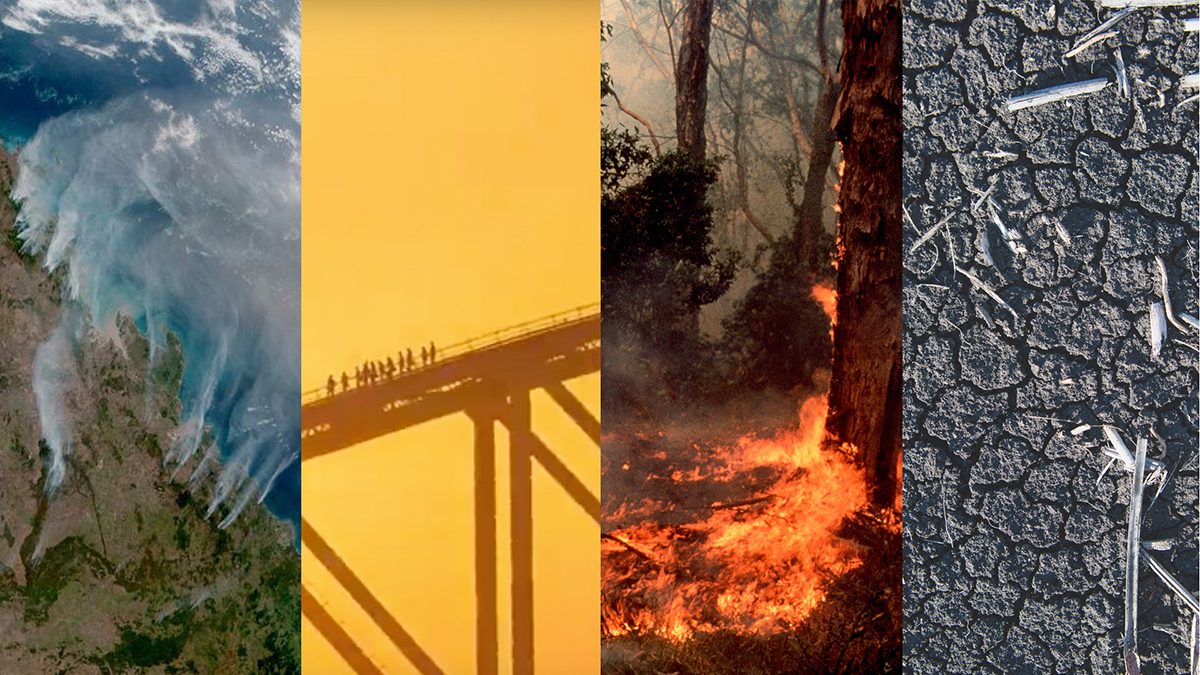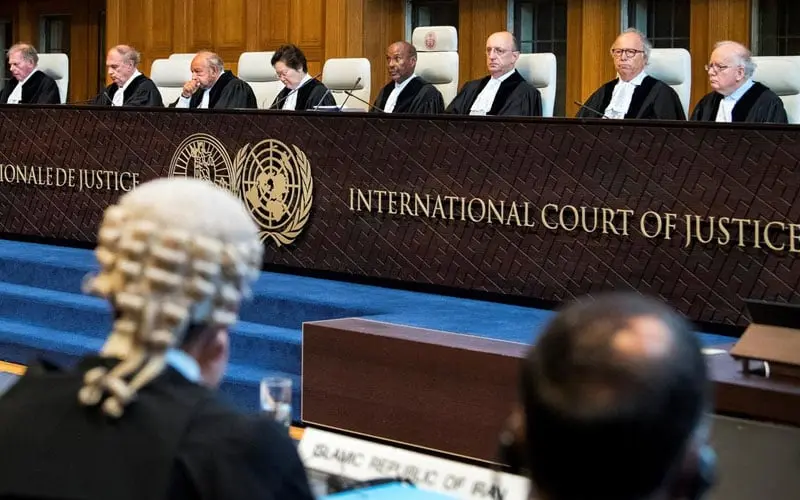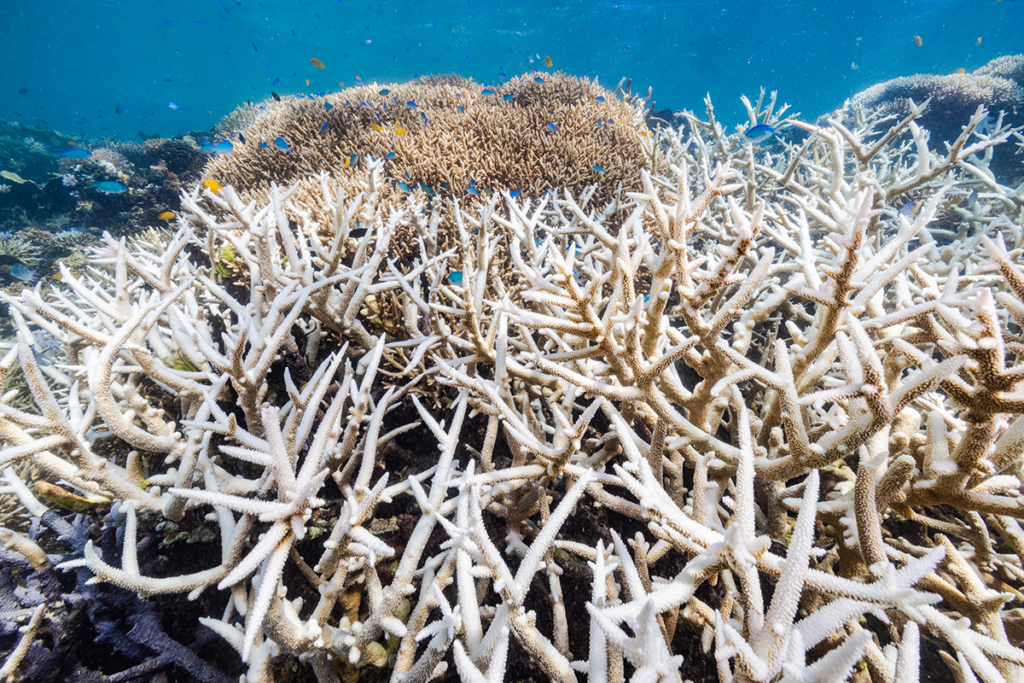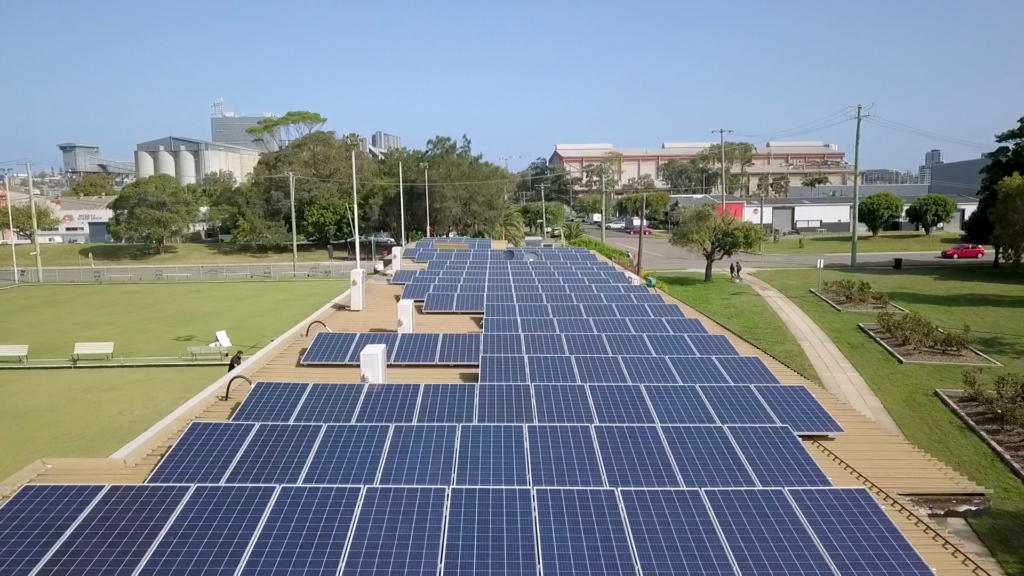This passage originally appeared as the foreword to our new report, ‘The lost years: Counting the costs of climate inaction in Australia‘.
Professor David Karoly, FAA (Fellow of the Australian Academy of Science)
A decade ago, the Labor Government had clear plans and legislation to address climate change. Australia joined the global community that recognised much stronger climate action was needed to avoid the unmanageable and to manage the unavoidable.
In 2012, the Labor Government established an emissions trading scheme as part of its Clean Energy Future legislation, created the Clean Energy Finance Corporation to support new large-scale renewable energy projects and established the Climate Change Authority to provide independent advice to the government on Australian climate change policy and emission reduction targets. I joined the Climate Change Authority as one of its inaugural members and the only climate scientist.
Back then, there were strong climate science research programs, led by the Bureau of Meteorology, CSIRO and many of our finest universities. In addition, the Government was supporting the National Climate Change Adaptation Research Facility.
A year earlier in 2011, the Labor Government had established the Climate Commission to provide expert advice and information on climate change to the Australian public. In its first report titled ‘The Critical Decade’, the Climate Commission said that unless Australia took climate action before 2020, our way of life would be at threat.
When Australia elected a Liberal-National Government in 2013, much of this changed. The Climate Council’s new report documents the decisions by this government and their profound impacts; the changes in legislation, the missed opportunities, the closure of programs, the misinformation and the self-censorship by government-funded organisations, as well as the increasing climate impacts that are harming Australians and our communities, businesses, ecosystems, and the places we love.
One of the first actions of the Liberal-National Government was to close the Climate Commission and restrict the provision of reliable information on climate change to the Australian public. When the Climate Commission was closed, it was instantly replaced by the new, independent and community-funded Climate Council, with the objective of continuing to keep the public informed.
The Liberal-National Government dissolved the legislation for the Australian emissions trading scheme in 2014 and ceased its operations in spite of its success. Australia’s combined emissions from all sectors, excluding from forestry and land, fell over the period from 2012 to 2014, and then climbed for the next four years. The economists were correct: putting a price on greenhouse gas emissions led to a reduction in emissions and removing that price led to an increase in emissions.
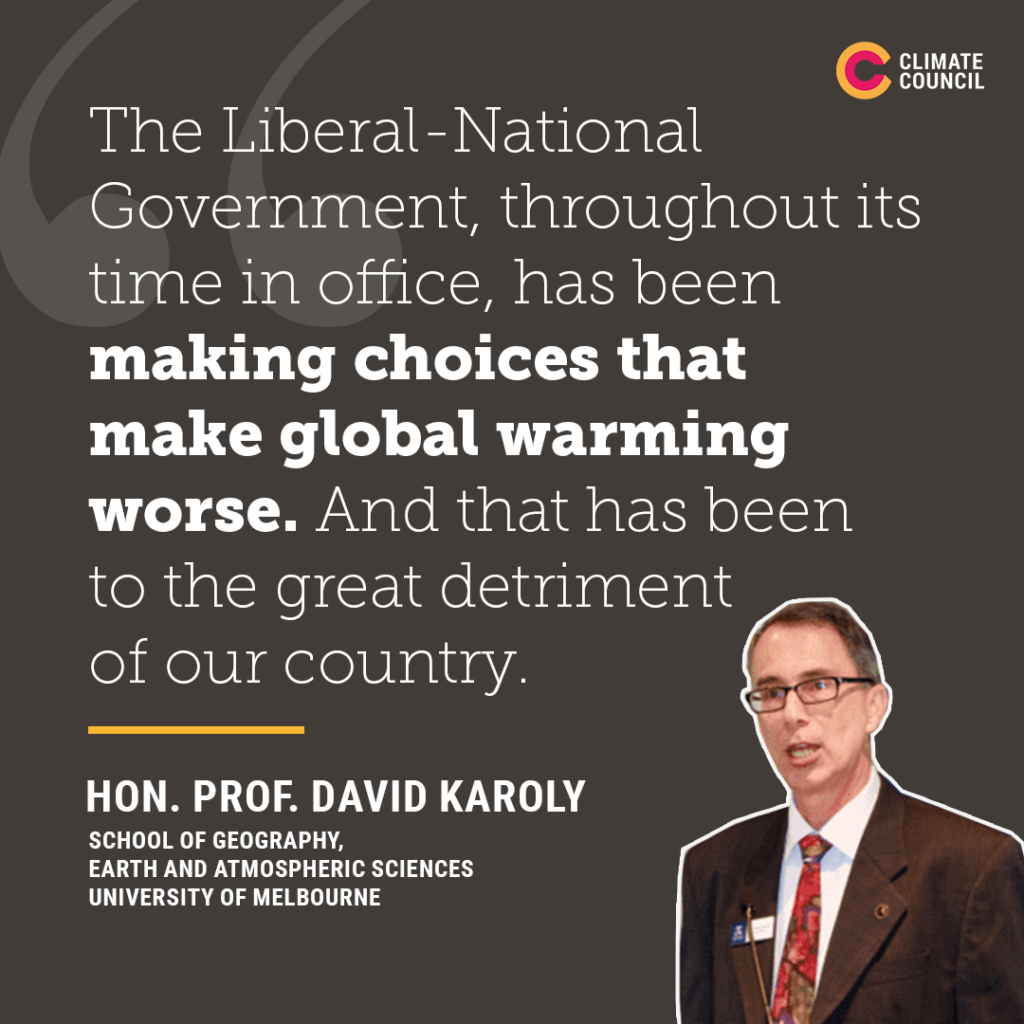
In early 2014, the Climate Change Authority published its Targets and Progress Review, based on the best available data and climate science. This recommended a 2020 emissions reduction target for Australia of 19% and a 2030 target of 40% to 60% below 2000 levels. The Liberal-National Government ignored this independent advice and set its own much weaker targets. The Authority completed its Final Report on Australia’s emission reduction targets in 2015 and reconfirmed its earlier advice.
Several members of the Authority resigned in 2015, but I continued on. This provided an opportunity for the government to appoint a new chair and members who were favourably inclined to support Liberal- National Government policy. With the majority of its members now new, the Authority was requested to undertake a Special Review on Australia’s climate goals and policies in 2016. As two of the three original members left on the Authority, Clive Hamilton and I published a Minority Report that criticised many of the conclusions of the Special Review, particularly its support for the Liberal-National Government’s emission reduction targets.
The Australian Climate Change Science Program (ACCSP), the government’s largest and longest-running climate science research program, was closed by the Liberal-National Government in 2016 after 27 years. It was to transition into the new Earth Systems and Climate Change Hub in 2015, but with substantially reduced funding in the government’s new National Environmental Science Program (NESP).
The decision in 2014 to close the ACCSP had major funding implications for research in CSIRO. It was a major factor in the decision by CSIRO in 2016 to substantially cut the number of staff involved in climate change science, and almost led to the closure of the new Earth Systems and Climate Change Hub. The Hub lost its inaugural Leader in 2016, and was unable to find a new Leader until I agreed to start as Hub Leader in CSIRO early in 2018, moving from my position as a Professor at the University of Melbourne.
A number of people questioned my sanity at that time; joining CSIRO when it had just made a number of its climate researchers redundant. I was also joining an organisation where staff were not allowed to publicly comment on government policy, no matter the relevance of the science research that they were undertaking. These constraints still apply to all public servants and to all climate scientists in the Bureau of Meteorology and CSIRO. I am only able to write this Foreword because I retired from CSIRO on Friday 4 February 2022.
Despite the efforts of the Liberal-National Government to handicap efforts to reduce Australia’s greenhouse gas emissions and to hamstring climate change research in Australia, the last decade has seen some positive outcomes. States and Territories are leading the way on climate action. Many major Australian companies are pushing for stronger action to address climate change. Many young people across Australia have recognised that climate change will have a greater impact on their futures than on their parents, and have been striving for stronger action, for example through the Schools Strikes4Climate.
As the major 2021 report of the Intergovernmental Panel on Climate Change concluded: “Every tonne of CO2 emissions adds to global warming”. The Liberal-National Government, throughout its time in office, has been making choices that make global warming worse. And that has been to the great detriment of our country.

